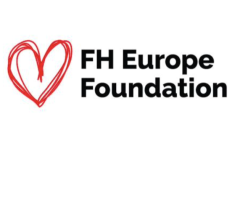August 5, 2014 — A survey, published online in the European Journal of Cardio-Thoracic Surgery, of 13,860 patients who had undergone interventions for aortic valve disease in Germany has revealed that more than 80 percent were in the same or a better state of health one year after the intervention, and was satisfied with the procedural outcome.
Aortic stenosis is the most frequent valvular heart disease in the aging Western population, and the prognosis of this disease in symptomatic patients with conservative therapy is poor. As a result, surgical aortic valve replacement (AVR) has become the therapeutic gold standard with well-documented benefits in terms of symptom relief and survival. During the past decade, transcatheter aortic valve replacement (TAVR) has emerged as a minimally invasive alternative for higher-risk patients, and the number of these procedures being carried out in Germany and Europe as a whole has increased in recent years.
Friedrich W. Mohr, M.D., Ph.D., and colleagues used the German Aortic Valve Registry (GARY) to look at the registered patients undergoing either AVR or TAVR procedures from 2011. Enrollment in the registry was voluntary and took place in 78 German centers. Baseline, procedural and outcome data, including quality of life, were acquired up to one year post-intervention. Vital status at one year was known for just more than 98 percent of patients.
One-year mortality was 6.7 percent (6,523) for conventional AVR patients and 11 percent (3,464) for patients who underwent AVR with coronary artery bypass grafting. One-year mortality was also 20.7 percent and 28 percent in transvascular TAVR and transapical TAVR procedures, respectively. However, if patients were stratified into four risk groups, the highest-risk cohorts showed the same mortality at one year regardless of type of therapy.
More than 80 percent of patients in all groups were in the same or better state of health at one year post-intervention and were satisfied with the procedural outcome.
Said Mohr: “GARY is unique in that it includes all interventional and surgical treatment options for aortic valve disease that are currently available in Germany. Our aim was to obtain a comprehensive and contemporary picture of the current practice of aortic valve intervention therapy and to create an independent database that will allow for long-term follow-up of those patients.
“The acceptance of this voluntary registry is demonstrated by the fact that 55 percent of all aortic valve procedures performed in Germany in 2011 were included, with an increasing recruitment rate observed in 2012. In addition, a good follow-up rate of 98.5 percent with regards to vital status and 90 percent for clinical information was achieved.
“The one-year results of the German Aortic Valve Registry confirm, in a large ‘real world’ all-comer patient population, that conventional surgery in operable patients yields excellent results in all risk groups. TAVR is being performed in a significant proportion of cases and is a good alternative for high-risk patients. Continuation of the registry and long-term follow-up will help to develop robust future risk models to predict patient outcomes for each treatment option in patients with aortic stenosis.”
For more information: www.ejcts.oxfordjournals.org


 November 12, 2025
November 12, 2025 









